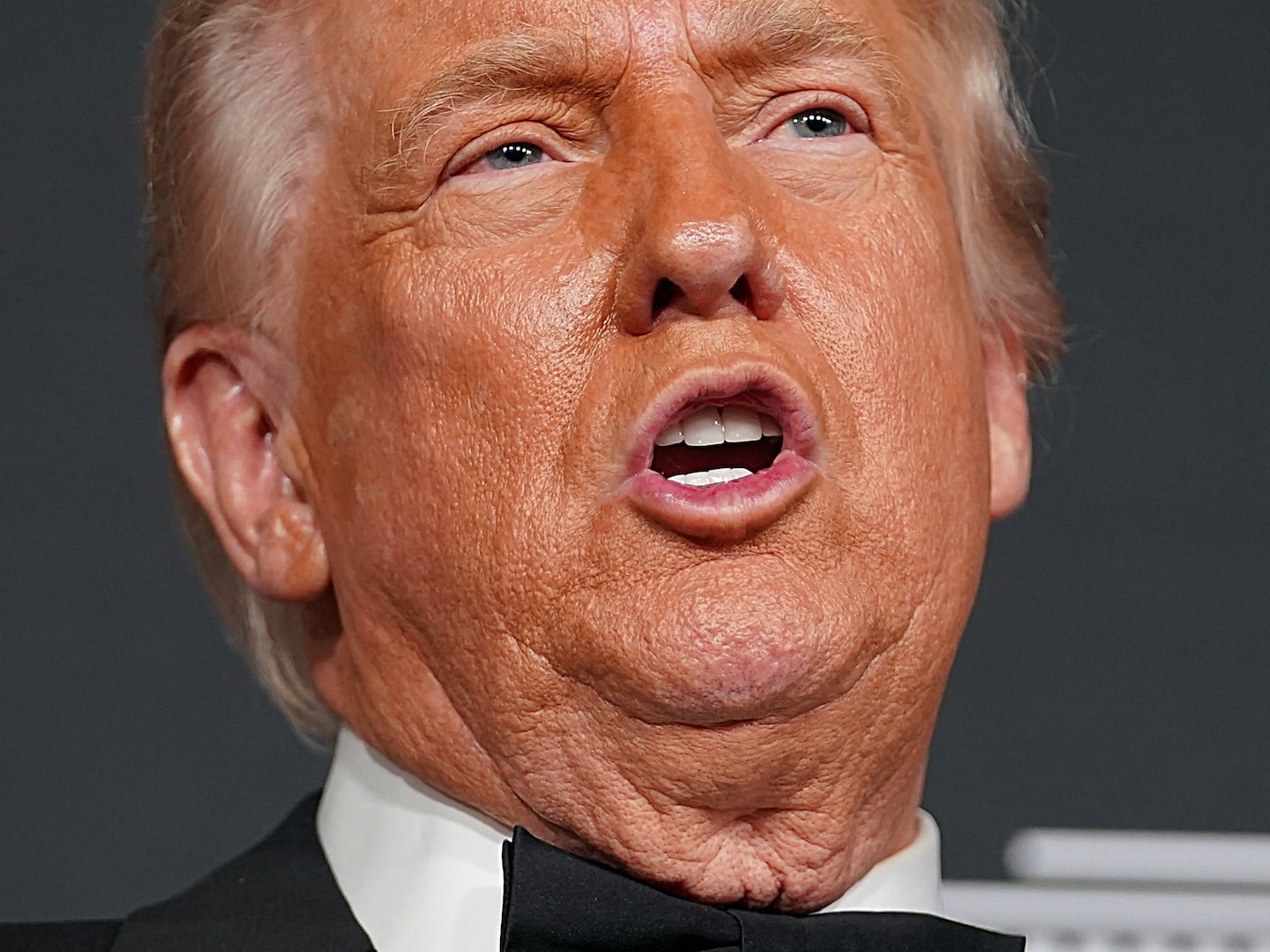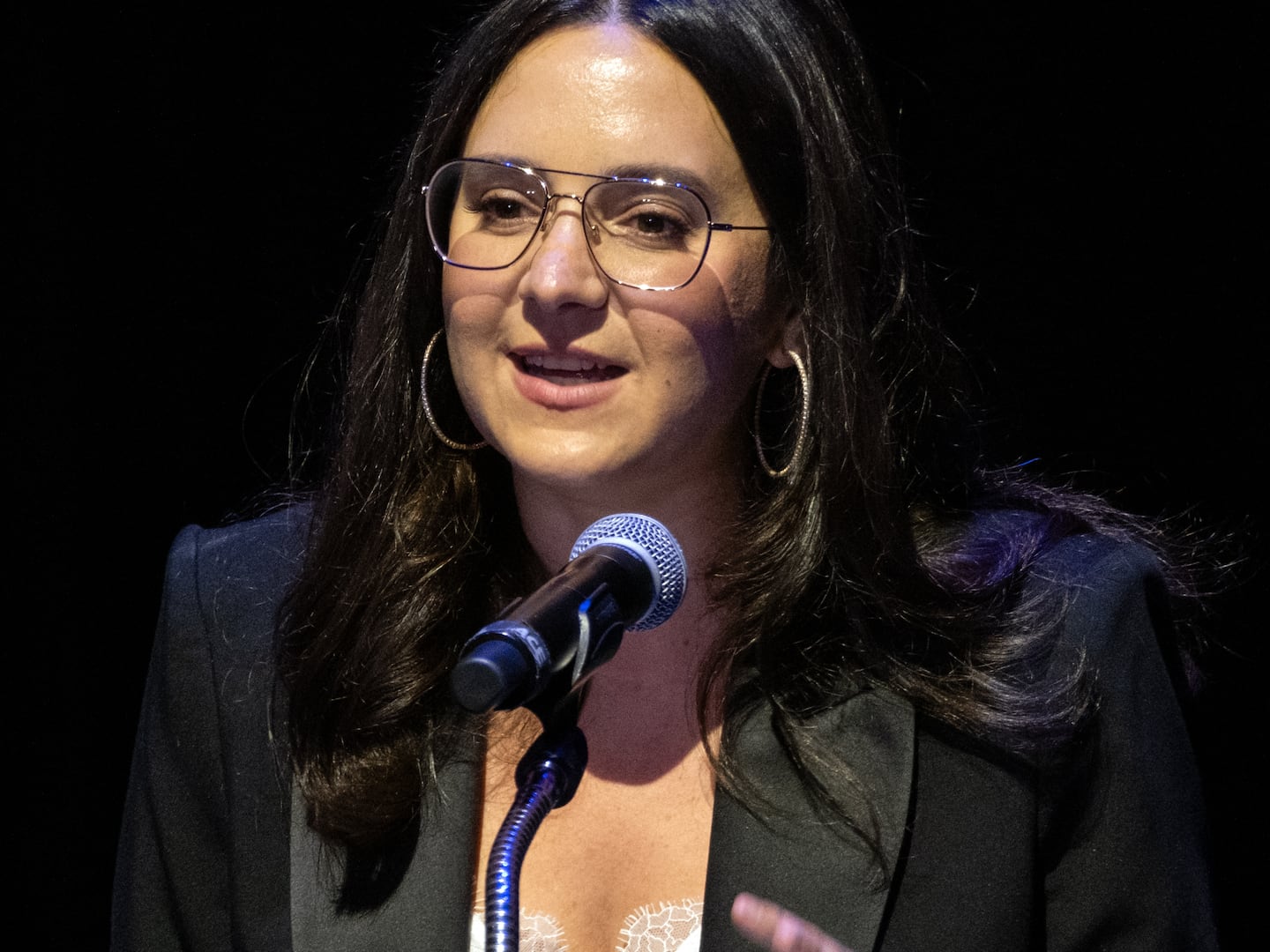You probably know Viktor Horsting and Rolf Snoeren as celebrated designers of high fashion—the artists behind a series of dramatic dresses and avant-garde shapes.
Something you probably don't know about them? They also make dolls.

The two Amsterdam-based designers, who met in design school and formed their brand in 1993, have quietly amassed an army of almost 70 “couture dolls” over several years, for which they re-create signature pieces from each of their collections in miniature form.
Since they began their business two decades ago, they have crafted an identity as highly creative and distinctively uncommercial designers, producing what became known as “conceptual fashion,” which, as a new book celebrating their work describes, “took concepts and ideas as its raw materials.” Viktor & Rolf have produced a White collection (Spring/Summer 2002) themed around Holy Communion, an Atomic Bomb collection (Autumn/Winter 1998–99) that included padded undergarments to distort silhouettes, and a Bedtime Story collection (Autumn/Winter 2005–06) that featured models in coats resembling quilted blankets and satin pillows for massive collars.
With each inventive collection, the designers have produced replicas of their favorite pieces for the dolls—from beaded evening dresses to massive bow contraptions. When viewed together, the dolls communicate a sense of the designers’ greatest hits, a sort of cheat sheet of their most memorable creations.
On June 9, an exhibition of the dolls opened at the Royal Ontario Museum in Canada.
We spoke to half of the design team, Horsting, about creating the dolls, returning to couture after 13 years, and what’s next.
When did you originally get the idea to make a doll collection?
We started making them for a retrospective nine years ago that we were invited to in London at the Barbican art gallery. We started making them because, at the time, we felt the need to show our work as one entity, and we were looking for a way to do that—to sort of take the speed of fashion out of it and show the ideas in a different way. There were requirements of what fit in the art gallery. It has a big atrium that was really huge, so we got the idea to build a giant dollhouse and to select a few outfits per season and re-create them in doll size. You look at them not as fashion collections that are separated in time, but you look at them as one entity—one big piece of work. In that way, you start to look at fashion in a totally different manner. We like the idea to cherish the ideas that we put into our collections.

Does this strategy of using the dolls to create a full collection make you think about, as you design ready-to-wear, how an individual collection is going to fit in with your overall body of work?
We don't really think about it that much when we do something new. When we do something new, it's really the excitement of trying new things and moving forward. But funnily enough, there's obviously a signature—and the collections we make will fit automatically in the total of the rest.
What's the challenge about designing for dolls versus people?
Well, of course, the designs are not made for dolls. They are fashion designs that we show on the catwalk and then are sold in the stores, but to replicate these to doll size is quite challenging. Everything needs to be miniaturized. Everything, meaning, literally everything: a print or texture of a fabric to all of the details—the buttons, the beading, but also the hair. We style the dolls with the same hairdos of the catwalk show. These are wigs that are made from human hair. They are made by hand. There's also the makeup. This is done by an artist who looks at the makeup [from the show] and replicates it onto the porcelain.
How do you choose which look from each collection is going to be made into doll form?
We go by feeling. The looks that we find most representative of a season. Sometimes it's only one, sometimes it's two, maybe three—we really go by feeling.
How will the upcoming show at the Royal Ontario Museum be different from the times that you've shown the dolls in the past?
It will be a selection, but it won't be the complete selection of dolls, which is growing every year. It's quite an army by now. We made an installation for the space together with Studio Job. They created an installation that is reminiscent of a catwalk. It's a more abstracted, poetic version of a catwalk.
There are 30 dolls in the show?
I think it's about 30.
Out of how many?
By now we're reaching about 60 or 70.
And where do they live full-time?
They live in Amsterdam.

In the studio?
No, we have a special place for them. They all come with their own case. They're all wrapped separately.
Would you ever sell them?
Could be. That's not why we started making them, but they are available to collectors. It's just that very often there's only one of them. Some are made in an edition of two, but most of them are unique pieces because they are so time-consuming and intricate. They're really couture dolls.
Do the dolls help instill a sense of permanency to the collections?
The basis of fashion—the fact that something is in and then it's out—sometimes comes as a pity that beautiful things and beautiful ideas get lost because of this. When something has a beauty, that beauty can stay longer than one season. Working on these dolls is, in a way, providing an antidote to this. It's like wanting to freeze time in way, wanting to cherish an idea for a longer time than is usual in fashion.
Do you have a moment that you're most proud of in your career?
Well, it was quite beautiful to see [the dolls] in London all those years ago. It was quite a proud moment, but there have been many. This is our 20th anniversary this year, and we feel quite lighthearted and we're very much in the mood to look forward toward the future and not so much look back. We're energetic and in the mood to do more.

What are you working on now?
Well obviously we're always looking on our next collection. But first of all, there is the couture show in July, and we are doing it for the first time after 13 years. For us, this is very exciting, and it’s very beautiful. It's an important moment, because it's also a celebration of our 20th anniversary. We started doing couture, and now we're doing it again. We're working on men, we're working on a new perfume, which will come out beginning of next year, so there's a lot going on.
Has anything changed between now and then in the way you approach couture?
No. It hasn't changed. Just that it's fantastic to work on a collection that is not bound to an industry, and there is no industrial process connected to it. This allows for so much freedom. Not to say that our ready-to-wear is not freedom. We also work in a very free way, and we feel very creative in our ready-to-wear, but it's different if there is an industrial process, designing a collection, because there are lots of deadlines and parameters that are different than when you work on couture.






